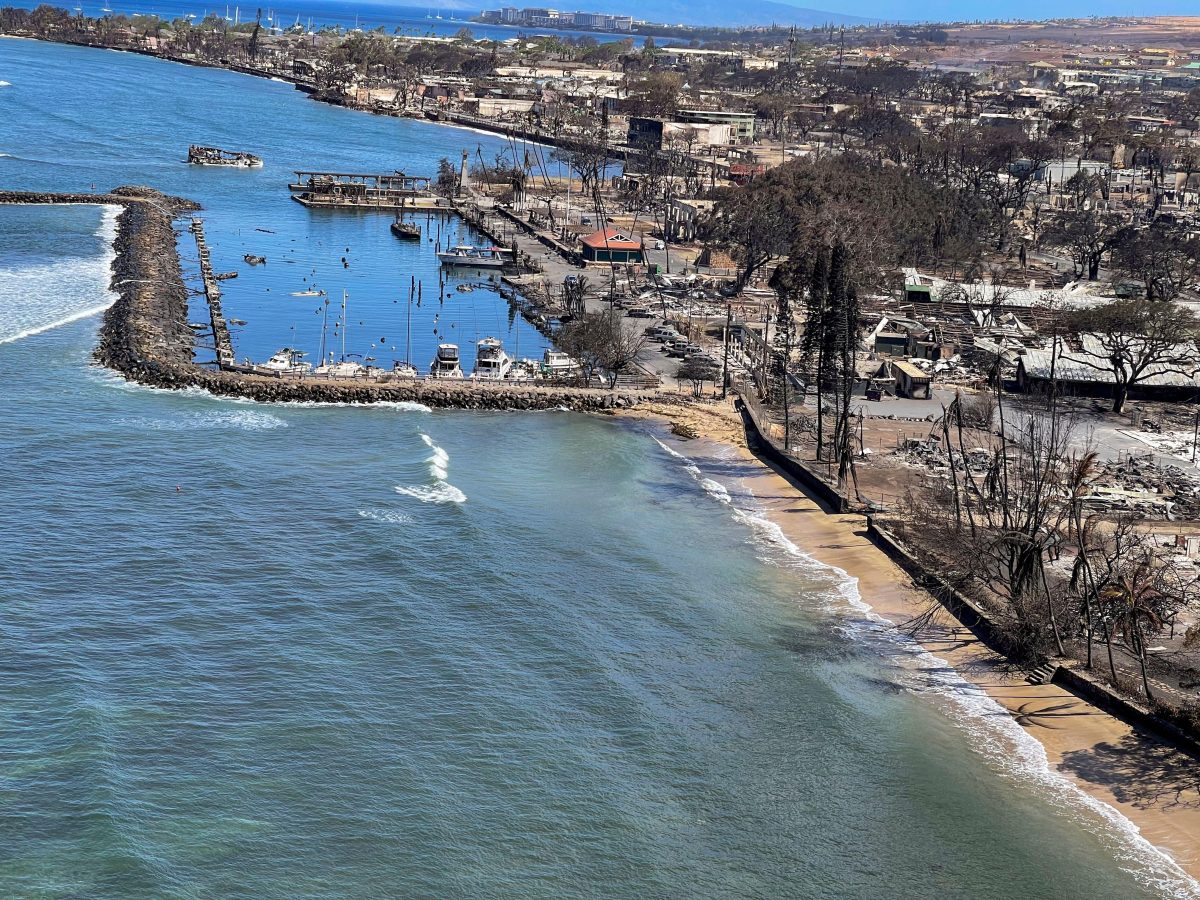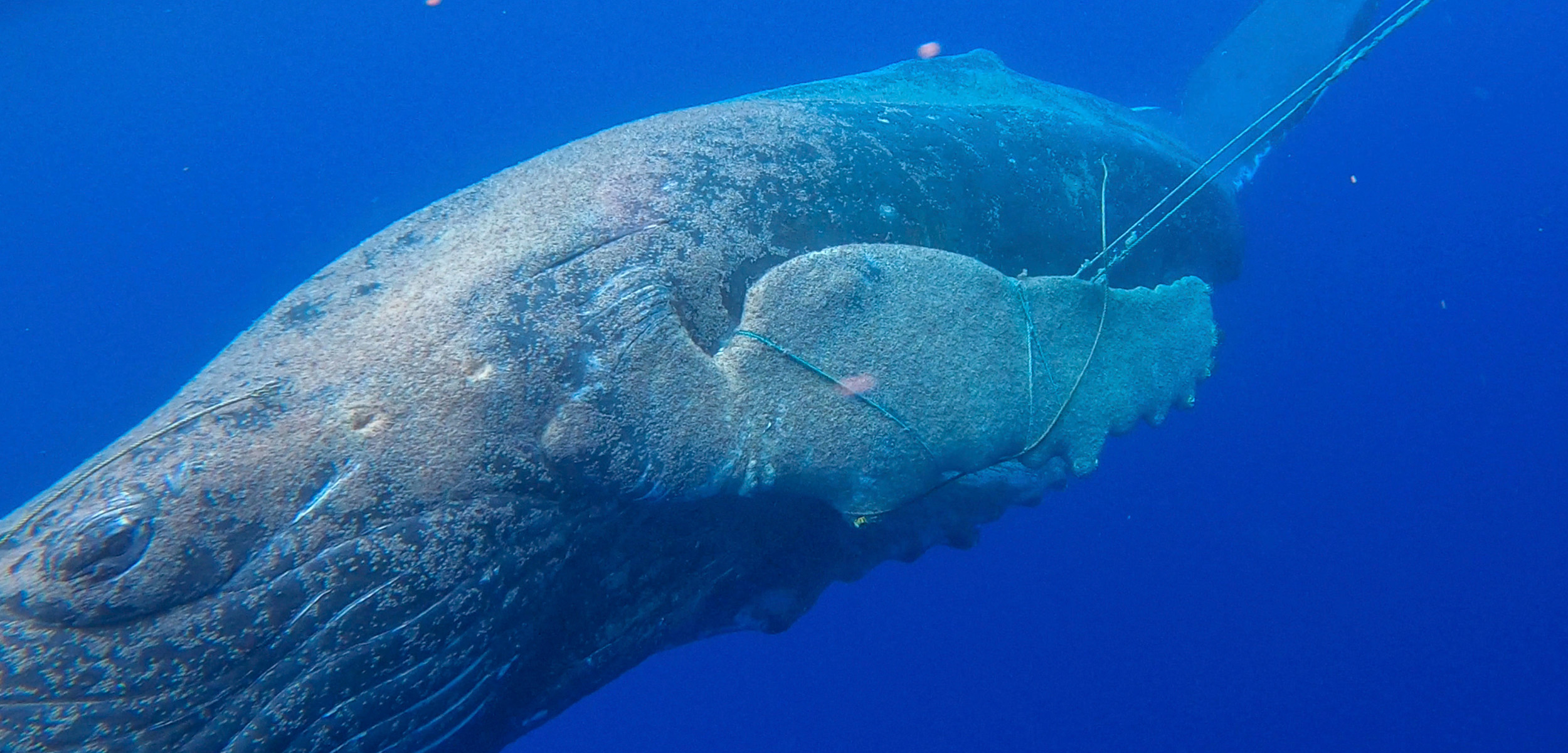After the Fire, Lahaina’s Whales Are Left in the Lurch
The August 2023 blaze torched the town’s harbor, disrupting a spotting network crucial to saving entangled whales.
Article body copy
The inferno raged through Lahaina, Hawai‘i, killing 100 people and displacing thousands. Months since the flames’ devastating march on August 8, 2023, the town has scarcely begun to recover. Yet while the flames have long been extinguished, the fire may not be finished claiming victims.
For Ed Lyman, the fire was only the beginning of his troubles. Lyman leads the region’s whale disentanglement team for the Hawaiian Islands Humpback Whale National Marine Sanctuary. And in the fire’s wake, he suddenly found he’d lost most of his volunteer eyes on the water.
Every winter, as many as 12,000 humpback whales congregate around Hawai‘i. The animals head south from Alaska to the region’s warm waters to give birth. But in the busy North Pacific, many become ensnared in lost fishing ropes, nets, and other debris.
In the early 2000s, Lyman joined fellow scientist David Mattila on Maui to help the US National Oceanic and Atmospheric Administration (NOAA) develop its first emergency response team for disentangling large whales. When Mattila left a few years later, it didn’t take Lyman long to realize he couldn’t solve the entanglement problem on his own.
Lyman leaned into support from the local boating community, asking members to stay alert for entangled humpbacks. If boaters spot one, they know to contact him right away. If they can, the boaters stand by and keep an eye on the whale until Lyman can scramble his small team of highly trained local volunteers to attempt a rescue.
Raising awareness in the boating community took a couple of years, but Lyman says it’s the best support he’s ever received. “It’s the aloha spirit,” he says.
Maui’s disentanglement response team is one of the best in the world, Lyman adds. They help teams in Alaska and down the west coast of North America, and they’ve trained disentanglement experts in 10 other countries. Volunteer whale spotters are often integral to their successes. Yet with an estimated 30 to 50 percent fewer boats on the water around Lahaina this winter, Lyman and his team will be mostly without help.
“Also,” says Lyman, “the fuel dock burned down.” With nowhere to refuel, Lyman isn’t sure how effective his team will be. “We could see a substantial decrease in our response network,” he says. “And that might mean we don’t find those entangled whales this winter.”

Along with a church, a preschool, and thousands of homes, the August 2023 fire in Lahaina, Hawai‘i, also took the harbor—the famous whaling, now whale-watching, base of Maui. Tour operators, research organizations, and private boaters lost vessels, vehicles, and buildings to the flames. Photo by American Photo Archive/Alamy Stock Photo
The disentanglement team also lost most of their specialized gear: the poles with curved knives on the end that they use to cut lines off whales, along with their drones, cameras, antennae, receivers, helmets, and safety vests. Most of these tools, stored in a container at a Lahaina boatyard, melted into a puddle. Lyman is trying to recruit boaters and companies from farther away to join his spotting network, including those based out of Maui’s Maʻalaea Harbor, 24 kilometers away.
One of those ready to step up is Riley Coon, a co-owner of Trilogy Excursions. Coon says the fire scattered his fleet of whale-watching and snorkel tour vessels. One boat burned in the harbor, he says, while another was saved by an employee, who piloted it to safety while being pelted by hot embers in smoke so thick and black he could barely see. The daring pilot saved that vessel, Coon says, and a few of his other boats were moored far enough away from the firestorm to avoid the worst of the disaster.
Coon is now operating some of his vessels from Maʻalaea and says he’s ready to reach out to Lyman if they find an entangled whale. Stopping what he’s doing to stick with an entangled whale can delay a tour, but “it’s our duty to help out, not just take,” Coon says. “We are the eyes and the ears out there on the water.”
For many, the fire was a financial blow from which they couldn’t recover. Fortunately for Lyman, a private donor recently stepped in to replace the melted gear. “By next winter,” Lyman says, “we will be closer to rebuilding our community and our network, but this season will be lean.”
The catastrophe in Lahaina is nowhere near resolved. For the humpback whales already arriving in the region’s cobalt waters, the human misery onshore is unknown and unknowable. Yet the consequences will be felt by the whales that arrive wrapped in unbreakable, abrasive lines or dragging a heavy veil of durable netting. With the loss of Lahaina Harbor and its community of concerned watchers, whales will likely suffer with no one to make the call that could set them free.

